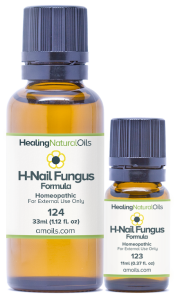8 Health Reasons to Check Your Hands & Nails for Changes in Appearance
In the past when doctors had less diagnostic tools to call upon, they would examine the hands of their patient for extra information. Apparently hands are a useful indication of problems with circulation, hormones and even thyroid function.
What do hands and nails show?
- Red palms that stay red for a long time may indicate the presence of a condition called palmar erythema and a symptom of liver disease, particularly of cirrhosis and nonalcoholic fatty liver. Inflammation of the liver can affect its function so toxic waste builds up, leading to an excess of circulating hormones causing the blood vessels in the hands and feet to dilate. This is why you get the red appearance. Other symptoms can include swollen legs and abdomen, prominent veins on the upper body and stomach as well as general tiredness and fatigue. Ask your doctor to check you by carrying out liver function tests.
- The length of your index finger can be important. British scientists have done a number of studies on what the length can mean and one study at the University of Warwick of (a) 1500 cancer patients to (b) 3000 healthy people suggested that men with longer index fingers than ring fingers are 30% less likely to develop prostate cancer. The theory of the researchers is that men with longer index fingers are also more likely to have lower testosterone. In a another study in 2008 at the University of Nottingham, researchers found that those with index fingers shorter than their ring fingers were more likely to get osteoarthritis. They studied 2000 people and the ones with the shorter fingers had twice the likelihood of getting it. This time another hormone, estrogen was the key. Longer index fingers, on the other hand, are associated with a higher risk of breast cancer in women. Scientists believe finger length is affected by exposure to varying amounts of the hormones testosterone and estrogen in the womb. Longer ring fingers indicate greater prenatal exposure to testosterone, while longer index fingers suggest higher estrogen exposure.
- Clubbed or rounded fingernails are often found with people who suffer from chronic respiratory or cardiac conditions that decrease the amount of oxygen in the blood. The nails then spread out and become rounder. Other symptoms can include shortness of breath or a chronic cough, fatigue or chest pain. See your doctor for an evaluation.
- Swollen fingers, when your fingers feel thick and stiff or your rings still won’t fit even after several days of drinking plenty of fluids and cutting back on salt, could suggest hypothyroidism. When the thyroid is underactive, it produces less of the important hormones that regulate your metabolism and keep your body functioning properly. If metabolism slows, it can mean weight gain and water accumulation. The fingers are one of the first places where you will see excess water. Consult your doctor who will give you a routine thryoid check.
- Pale nails that stay white more than a minute after you press on them, or look pale all the time, can be a sign of anemia. This iron deficiency causes pale nails when there aren’t enough red blood cells circulating in the bloodstream. Fingernails and toenails that split, flake or peel could also be a sign that you are blood deficient. You can try treating anemia yourself by increasing your dietary intake of iron-rich foods such as red meat, spinach and other dark greens and nuts but you’ll probably need to take an iron supplement too. Look for a non-constipating formula and take with vitamin C to help iron absorption.
- Tiny red stripes under the nails are called splinter hemorrhages because they look like tiny red or brownish splinters but can signal infection in the heart or blood and are caused when when tiny blood clots block blood flow in the capillaries beneath the nails. This condition is common in someone with a heart murmur or underlying infection. So if you’ve never had your heart checked and are concerned about these symptoms, arrange for a check up.
- Terry's Nails is the name given to the appearance of a dark arc near the fingertips while the nails themselves are opaque. Very common in people with severe liver disease but it can also occur with hyperthyroidism, diabetes or malnutrition.
- Fingertips that are grey or blue-tinged can be a sign of a circulation disorder known as Raynaud’s syndrome, causing sudden temporary spasms in the blood vessels and arteries, constricting blood flow to the hands and fingers and decreasing circulation. Addition symptoms are numbness and cold hands. More common in women than men and in cold weather, stress can also play a part. As cold is a major trigger, sufferers should avoid handling cold or freezing items and always wear glovers in cooler weather.
And finally, don't forget about nail fungus
Nail fungus is a fungal infection in the nails and may first appear as white or yellow spots on the nail. The fungus can cause the nails to thicken and discolor. It is important to treat the condition before it becomes too painful and causes permanent nail damage. Keep an eye on the state of your hands and your nails as they could be telling you that something is just not right. 



